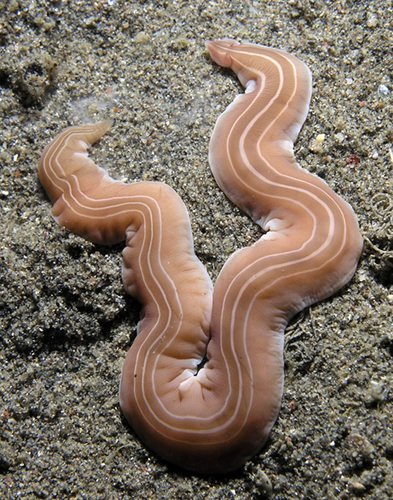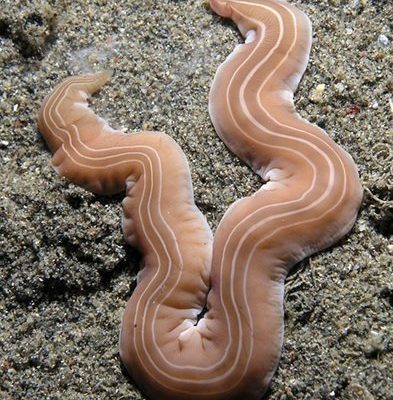
Now, you might be wondering, what exactly are ribbon worms? They’re long, slender creatures belonging to the phylum Nemertea. These guys can be colorful, and their movements are often mesmerizing. But why should we care about monitoring them? Here’s the thing: ribbon worms play essential roles in their environments, and observing them can give scientists invaluable insights into coastal health and biodiversity—so much so that citizen science projects rely on data collected by everyday folks like you and me. Let me explain how you can get involved.
What Are Ribbon Worms and Why Monitor Them?
Ribbon worms are soft-bodied marine animals that can range from a few centimeters to several meters long. They often exhibit bright colors and have a unique ribbon-like shape, which makes them stand out among other sea life. Additionally, they exhibit fascinating behavior, such as extending their bodies to hunt for prey, which usually includes small crustaceans and other marine invertebrates.
By monitoring ribbon worms, we contribute to essential citizen science projects that track marine biodiversity. This can help scientists understand the health of marine ecosystems. For instance, increased pollution or changes in water temperature can affect their populations. By keeping tabs on them, we can gather data that shows how local ecosystems respond to environmental changes.
Another interesting aspect is their role as predators and prey within food webs. **Monitoring** ribbon worms helps us understand not just their biology but also the complex relationships they have with other sea creatures. In other words, these studies can reveal much about both the species themselves and the health of their habitats.
Getting Started with Ribbon Worm Monitoring
So, how do you join the ranks of citizen scientists monitoring ribbon worms? It’s simpler than you might think! First, you’ll want to equip yourself with some basic knowledge. Familiarize yourself with the various species of ribbon worms. This could mean browsing websites, reading books, or even watching documentaries. The more you know, the more you can contribute!
Next, you’ll need the right tools. While you don’t need anything fancy, a good field guide to marine life, a notebook for observations, and a smartphone for pictures can be quite helpful. If you’re visiting the beach or a coastal area, having a bucket or container can allow you to safely observe the worms without harming them. Don’t forget to wear gloves if you handle them!
Finally, you can connect with local citizen science projects or online platforms where you can share your observations. Websites like iNaturalist or local marine conservation groups often have ongoing projects focused on ribbon worms and similar species. These platforms can help you document your findings and see how your data fits into broader research goals.
How to Identify Ribbon Worms
Identifying ribbon worms can be quite the adventure! They come in various colors and sizes, but there are some common traits to look for. Most ribbon worms have a long, flat body that can appear segmented or smooth. Their colors can range from shades of brown to vibrant oranges and yellows, making them quite eye-catching.
You might notice that these worms can sometimes extend their bodies to several times their length when searching for food or escaping predators. This ability is a crucial aspect of their behavior and makes them standout creatures in tidal pools or soft seabeds. When observing them, take note of any distinctive markings or colors that may help you identify the species later.
One common mistake is confusing ribbon worms with other long, thin creatures, like some types of flatworms or larvae. A good rule of thumb is to look for the **unique way** ribbon worms move, as they often undulate gracefully. If you’re ever unsure, comparing your observations with images from reliable resources online can help clarify.
Documenting Your Observations
Once you’ve spotted some ribbon worms, it’s time to get documenting! This step is crucial for contributing to citizen science projects. You can create a simple observation log that includes details like the date, location, size, and color of the worms. You could also note their behavior—were they actively hunting, hiding, or just resting?
**Photos can be invaluable** when documenting your findings. If possible, snap clear pictures from different angles. Make sure to capture any notable features, as this will help scientists verify your observations. If you’re using apps like iNaturalist, they often have built-in features that guide you through documenting your findings easily.
Don’t forget to share your observations. Uploading your data to citizen science platforms allows researchers to analyze trends and gather vital information. Your contributions might help shape conservation efforts and influence how we approach marine health.
Common Challenges in Monitoring Ribbon Worms
While monitoring ribbon worms can be rewarding, it’s not without its challenges. One of the main hurdles is **accessibility**. Depending on where you live, finding ribbon worms might be tricky if you don’t have easy access to coastal areas. Not to worry; many species inhabit tidal pools, marshes, and even estuaries, so you might find them closer than you think!
Another challenge is distinguishing between species. There are over a thousand identified species of ribbon worms, and they can look quite similar. To tackle this, take your time to familiarize yourself with different types and their unique characteristics. Joining local groups or forums can also help you connect with others who share your interest in marine life.
Weather conditions can also impact your ability to monitor ribbon worms effectively. If the water is too rough or the tide is high, it might not be safe to explore. In such cases, consider monitoring the conditions before heading out, and always prioritize safety.
The Impact of Citizen Science on Marine Research
Citizen science has opened new doors for marine research, allowing ordinary people to contribute to vital scientific endeavors. By monitoring ribbon worms, you’re not just gathering data; you’re helping create a broader understanding of marine health. Your contributions can help scientists identify trends about pollution or climate change impacts on coastal ecosystems.
Additionally, your involvement raises awareness about marine conservation. When you share your findings with friends or social media, you spark conversations about the importance of preserving our oceans. This grassroots approach is crucial for fostering a culture of environmental stewardship and encouraging more people to get involved.
In many cases, citizen science projects can lead to significant discoveries. For example, increased data can reveal shifts in worm populations in response to environmental changes. The more people engage in monitoring, the clearer the big picture becomes for researchers.
Wrapping Up Your Ribbon Worm Monitoring Journey
Getting involved in monitoring ribbon worms not only enriches your understanding of marine life but also contributes significantly to scientific research. It’s a chance to step outside, explore the beauty of coastal ecosystems, and connect with a community of like-minded individuals who care about the environment.
Remember, you don’t have to be a marine biologist to make a difference. Whether you’re observing ribbon worms during a beach outing or documenting their behavior in tidal pools, every bit of data counts. So grab your notebook and camera, and embark on your journey of discovery. Who knows? You might just uncover something that helps scientists understand our oceans a little better. Happy monitoring!

